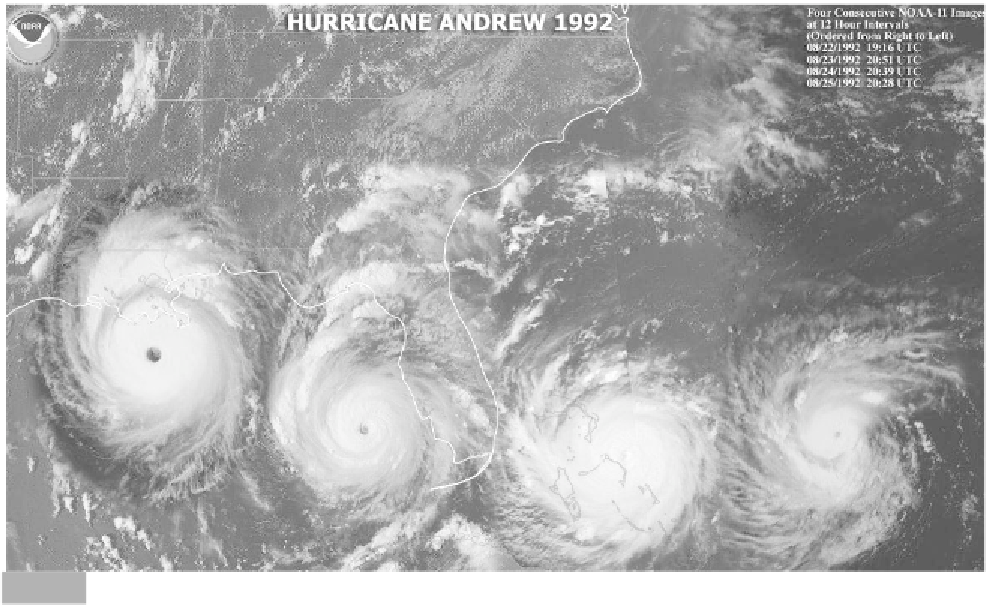Geoscience Reference
In-Depth Information
25 Aug
22 Aug
24 Aug
23 Aug
Miami
NOAA composite satellite image of Hurricane Andrew's path, 22-25 August 1992 (NOAA, 2002).
Fig. 3.7
making it a rare Saffir-Simpson category 5 event.
Mitch made landfall on 28 October over Honduras,
slowed its westward progress and dumped, during the
subsequent week, up to 1.9 m of torrential rain on
the mountains of Central America. This led to
catastrophic flooding and mudslides in Honduras,
Nicaragua, Guatemala, Belize, and El Salvador.
Hundreds of thousands of homes were destroyed and
up to 18 000 people died, making the storm the worst
in the Americas since 1780. Over three million people
were made homeless. In Nicaragua, damage was worse
than that resulting from the 1972 Managua earth-
quake. So calamitous was the disaster that appeals for
international aid were made by all countries affected
by the hurricane. In Honduras, at least 30 per cent
of the population was homeless, 60 per cent had no
access to safe water, 66 per cent of the crops were
destroyed, and 100 per cent of the road network
rendered impassable. The World Food Programme
estimated that 12 per cent of the population required
long-term food supplies, while UNICEF estimated
that recovery would take 40 years. The disaster
epitomizes the effects of severe natural hazards upon
developing countries characterized by poverty, civil
war, and economies dominated by a single commodity
primary industry.
Sheet of plywood driven through the trunk of a Royal Palm
by extreme winds during Hurricane Andrew in South Florida
(NOAA, 2003).
Fig. 3.8
Hurricane Mitch, October/November 1998
(Lott et al., 1999)
Hurricane Mitch was the second most destructive
hurricane ever recorded in the Atlantic Ocean. It
began as a tropical depression on 21 October 1998 and
wreaked havoc across the Caribbean for two weeks
before dissipating in the Atlantic on 4 November.
During this time, it reached wind speeds of 290 km hr
-1
,















